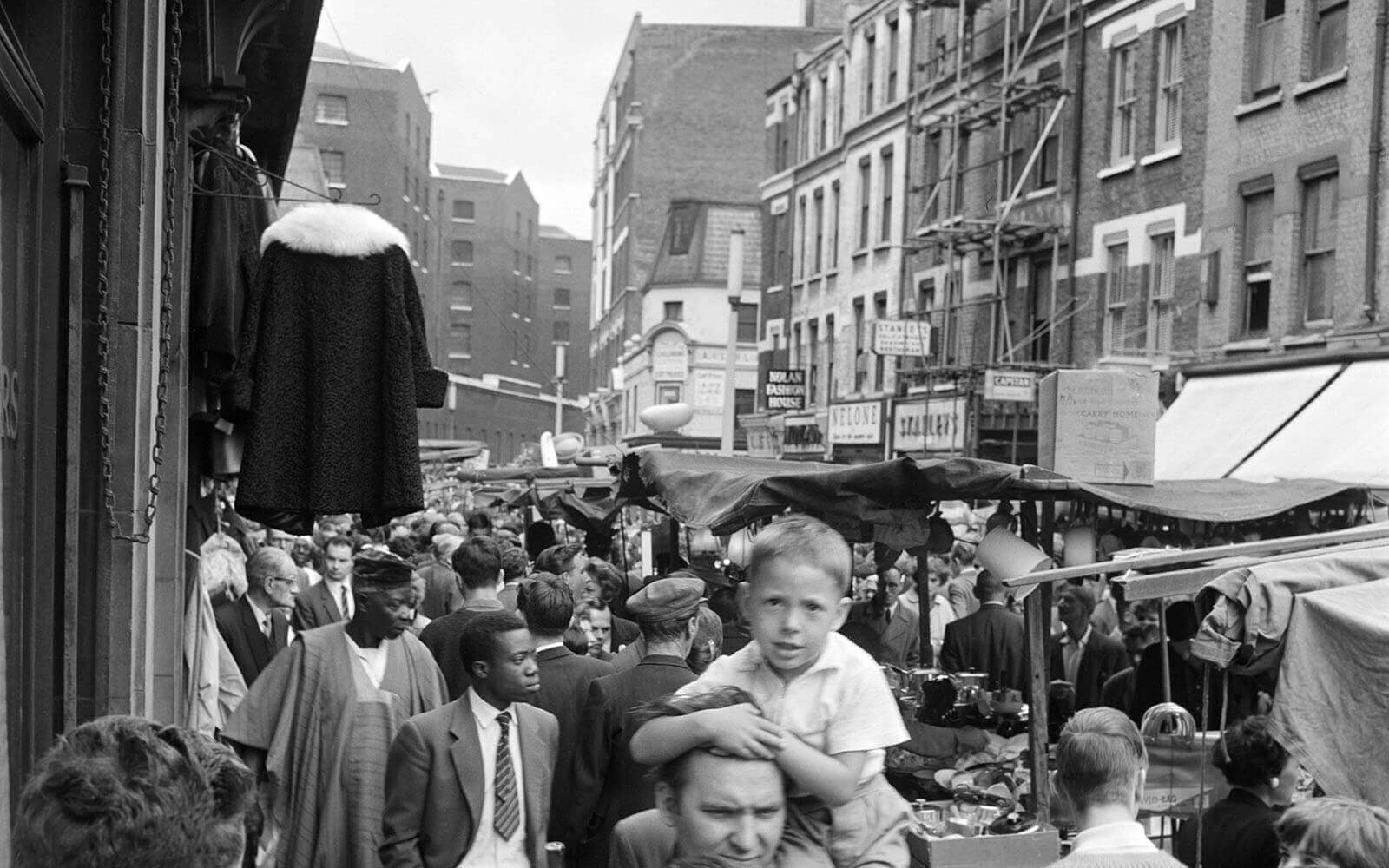Life on Tower Hill
The area around Tower Hill in the 1940s, 50s, and 60s would have been a thriving hub of different communities and diverse groups of people. While it is difficult to get a complete picture of how people felt, studies undertaken at the time are a valuable historical resource. One such report was compiled by the Ugandan sociologist, Derek Bamuta, whose findings were reviewed and of use to Prime Minister Clement Atlee. Bamuta acted on behalf of the Bethnal Green Family Welfare Association, aiming to “get to know something of the coloured people who live around Stepney” and ultimately uncover some of the difficulties these communities faced and the ways they might be better supported.

Middlesex Street, part of Petticoat Lane Market, Whitechapel, London, c1946-c1959. Courtesy of Alamy
Baumta’s sociology was grounded in observation and interviews, and his report details how he had to gain the trust of each community before truly understanding it. “The first few weeks I tried to make friends I drew blank”, he reports, “as they thought I was a spy or detective”. Many of the communities were bound by shared heritage of some sort, either having travelled from the same country or location, having similar ethnicities, or by speaking shared languages. Bamuta reported that there was a “very strong feeling of colour unity in the East End”, and that some communities spoke “a kind of English” alongside their native tongues. This included Jamaican and other Caribbean creoles: languages that developed from cultural and linguistic contact between groups of people, such as during the British colonial occupation of parts of the Caribbean. Languages like this would go on to form part of what is now known as Multicultural London English (MLE). These communities, Bamuta reported, were not generally wealthy: many lived in accommodation that was dilapidated or run-down, or even buildings that had been condemned following the bombing in the Second World War: “I have reason to suspect that a lot of them actually sleep in bombed out houses”, Bamuta writes.
The welfare and social options available to these communities were few, and generally individual to each group of people who had immigrated from different parts of the world. Bamuta describes each group in turn, and noting that a great many of them are very happy with life in London. For many West African immigrants, “the main amusement is sitting in the cafes and drinking tea and talking, later, in the evenings, going into pubs for a drink”, while those from the West Indies “go in a lot for jazz” and are “fond of boxing”.
East End - Cable Street. (1960-1969). (No audio available) Courtesy of British Pathe
Although the living conditions for these people were among some of the lowest in London at the time, the city still offered them a better life than elsewhere. After the Second World War, Britain opened its doors widely to citizens of Commonwealth countries, in a desperate need for workers willing to staff crucial roles in the National Health Service, in transport services, and in industrial roles like those at the Royal Mint.
“When I asked these lads if they ever intended going back to their own homes, they said they preferred to stay away. They gave me the impression that the conditions they were living under were far better than they have at home. In England they are free and have no restrictions as long as they do not violate the law.”
